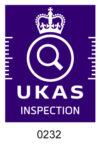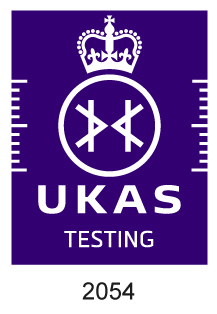Menu
close
**LATEST** New quantitative face fit services for RPE
Book in today
As the NHS grew at a time when asbestos was being widely used, it’s not surprising that directors of compliance and estates at NHS trusts are on the ‘front line’ in dealing with the safety risks that it presents.
Make no mistake: NHS trusts go to great lengths to protect their patients and staff from the risks asbestos poses. However, they face an uphill battle against time and squeezed budgets – both of which can be stretched even further when urgent risks to patient health arise, such as extreme heatwaves or cold spells.
If you are a duty-holder, there is a lot that you already know about asbestos safety in your NHS trust. Read on to find answers to common questions that you may not have known about.
Despite a total ban on the use of asbestos in construction in 1999, it was used prolifically when constructing or redeveloping NHS sites (as well as other public buildings) in insulation, fireproofing and textiles.
You will already know that if it doesn’t present a risk to human health, it is considered safe to leave it where it is (though you must continually re-assess whether that risk to health changes).
This fact alone can explain why it is still so widespread – and if you are reading this, it is likely that you are affected by it. The BBC reported in 2017 that it was installed in 94% of hospitals in London alone, and the Pharmacist’s Defence Association reported its presence in 695 NHS hospital buildings in Scotland.
In hospitals, many of the asbestos-containing materials (ACMs) you may be responsible for monitoring and managing the safety of will be in maintenance areas such as:
As you may notice, these areas aren’t unique to a hospital environment – and the regulations governing your management of the risk aren’t any different to another non-commercial facility. However, given that the presence of asbestos in these locations can affect the operations of both staff and patient facilities, the speed and nature of your response to the asbestos risk are critical in averting a more significant facility safety or human health issue.
* Compliance Tip: The areas where asbestos is installed in your hospital will all be indicated in your asbestos register. However, if you believe that it is incomplete or incorrect, you should immediately request expert advice – which may involve surveying or reinspection – to identify areas where it may be installed.
It’s exceptionally unlikely that patients will be directly exposed to asbestos in a hospital ward – a lot of work to remove asbestos from patient areas has taken place over the last 20 years.
However, there are two dimensions that require particularly careful management from the duty holder:
If asbestos is found to present a sufficiently high risk in a maintenance area that provides a critical service for a ward (e.g., heat or air conditioning), it’s entirely possible for that area shutting down to have a knock-on effect that causes the ward to be temporarily closed as well.
2. Long-term exposure
As you might know, the risk posed by asbestos is low in a single case of exposure, and much higher in long-term, repeated exposure to airborne asbestos fibres.
It’s a misconception that only people who work directly with asbestos are at risk.
The Guardian reports that, since 2017, 53 healthcare professionals in England – none of whom are maintenance staff – have died of mesothelioma as a result of long-term ‘occupational exposure’ from working in NHS buildings where asbestos is installed.
Compliance Tip: if your staff are likely to be working near asbestos-containing materials (ACMs), you will need to communicate these risks to them as part of the ‘communication plan’ in your asbestos management plan.
The duty to manage asbestos in an NHS trust doesn’t always fall to the same person – much less the day-to-day compliance tasks. Even if, as a director of compliance or head of estates, you are the duty holder in your trust, that responsibility may be held by someone else elsewhere – in particular, by the owner or leaseholder, such as NHS Property Services.
This is important because, regardless of who the duty holder is, they will often appoint an Authorising Engineer (AE) – an independent and legally competent advisor whose sole focus is to resolve these doubts and build a strategy for asbestos management.
So, whilst you can gain some clarity by reviewing your asbestos management plan and identifying gaps in knowledge, there is little time for many duty holders to do this, much less build a comprehensive, long-lasting strategy for asbestos management. This is why it’s often common practice to appoint an experienced AE.

Protecting ‘at-risk’ patients and staff, managing projects cost-effectively, and juggling these with other vital health, safety and energy-efficiency demands – whilst the regulations governing asbestos safety aren’t unique to the NHS, the scope and scale of challenges you face are. If you are ready to seek that support from a pragmatic, competent partner, get in touch with AEC .
Asbestos is a naturally occurring fibre that was widely used in construction and other industries until the late 1990s. The three types of asbestos fibres most used in the UK are: blue (crocidolite), brown (amosite) and white (chrysotile)
Before its dangers were known, asbestos was often used in buildings for insulation, flooring, roofing, and was sprayed on ceilings and walls. Its use is now banned in the UK, but buildings constructed before the year 2000 may still have asbestos in them. Materials containing asbestos are referred to ‘ACMs’ (asbestos containing materials). Asbestos can also be found in soils, where ACM waste has been disposed.
If asbestos inside buildings remains intact, it poses very little risk. It’s only when it’s damaged or disturbed that tiny asbestos fibres can be released into the air and enter your lungs when breathing. Breathing in asbestos fibres can significantly damage your lungs and their lining. The symptoms of asbestos-related conditions take many years – even decades – to appear after the original exposure to asbestos. This means that exposure a long time ago might only show up as a condition today.
UK law is very strict about managing ACMs (asbestos containing materials). It is heavily regulated to ensure best practice and safety of anyone who may come into contact with it. The Duty to Manage Asbestos is the responsibility of the Duty Holder and the guidelines are included in the Control of Asbestos Regulations 2012 (CAR 2012). The Regulations set out your legal duties and the ACOP and guidance give practical advice on how to comply with those requirements. Download the CAR 2012 regulations from our resource library.
The Duty Holder is the owner of the non-domestic premises or the person or organisation that has clear responsibility for the maintenance or repair of non-domestic premises.
The Duty Holder is required to manage the risk from asbestos by:
1. Finding out if there is asbestos in the premises, its location and what condition it is in.
2. Keeping an up-to-date record of the location and condition of the ACMs.
3. Assessing the risk from the material
4. Preparing a detailed plan of how the ACMs risks will be managed
5. Taking steps to put the plan in action
6. Reviewing and monitoring your plan
7.Having a system to inform others about the location and condition of ACMs
There are 2 main types of survey: Asbestos Management Surveys and Asbestos Refurbishment/Demolition Surveys.
A management survey will be required during the normal occupation and use of the building to ensure continued management of the ACMs in situ. As part of your management plan re-inspection surveys will be carried out. These are periodic condition inspections that checks for any deterioration of ACMs caused by natural degradation, accidental damage or poor removal practice.
A refurbishment/demolition survey will be necessary when the building (or part of it) is to be upgraded, refurbished or demolished.
Regulation 4, CAR 2012 stipulates that the duty holder manages the risk of from asbestos by finding out if there is asbestos in the premises, its location and what condition it is in. It also allows social housing providers to comply with risk assessments as outlined in Regulation 5, CAR 2012. An asbestos survey will provide sufficient information for: an asbestos register and plan to be prepared, a suitable risk assessment to be carried out and a written plan to manage the risks to be produced.
Every survey is unique, depending on its purpose and the size, usage and lifespan of the premises. We work with our clients to provide a tailored service specific to their needs. Generally, here’s what to expect during an AEC survey:
Management surveys and Re-inspection surveys are less intrusive than a refurbishment/demolition survey. The surveyor will use plans/maps of your building to identify the location of suspected ACMs, they will take photographs to show the condition of the materials and record all their findings. The surveyor will not disturb any suspected asbestos other than take a small representative sample (typically no bigger than 1cm2). In the case of any area being inaccessible the surveyor will record ‘presumed’ asbestos. Any material samples will be securely contained and labelled on site before being transferred to our laboratory for analysis.
Refurbishment and demolition surveys are more intrusive surveys. The surveyor will work alongside your development plans to inspect areas to identify any ACMs that may be disturbed throughout refurbishment works. In the case of demolition, the whole building will be surveyed. The surveyor will access all areas of the building marked for demo/refurbishment (such as floor coverings, above false ceilings, lofts, inside risers, service ducts, lift shafts, underground rooms, and under crofts). This will also involve sampling any areas that were ‘presumed’ asbestos in other less intrusive surveys. The surveyor will not disturb any suspected asbestos other than take a small representative sample (typically no bigger than 1cm2). Specialist surveyors trained to work at height and in confined spaces will carry out surveys in ‘hard to reach’ areas, and it may involve using specialist access equipment. Any material samples will be securely contained and labelled on site before being transferred to our laboratory for analysis.
Our clients benefit from AEC’s online portal. Available 24/7 all your records are contained in an easy-to-use management system. You can view all your sites survey data, risk items and action plans in real time. View AEC’s Client Portal here.
UKAS is the National Accreditation Body for the United Kingdom. They assess and accredit organisations that provide services including certification, testing, inspection and calibration. UKAS accreditation ensures the highest levels of impartiality and competence through a continuous assessment process. This allows clients to have confidence in the quality of services provided. View our UKAS accreditations here.

